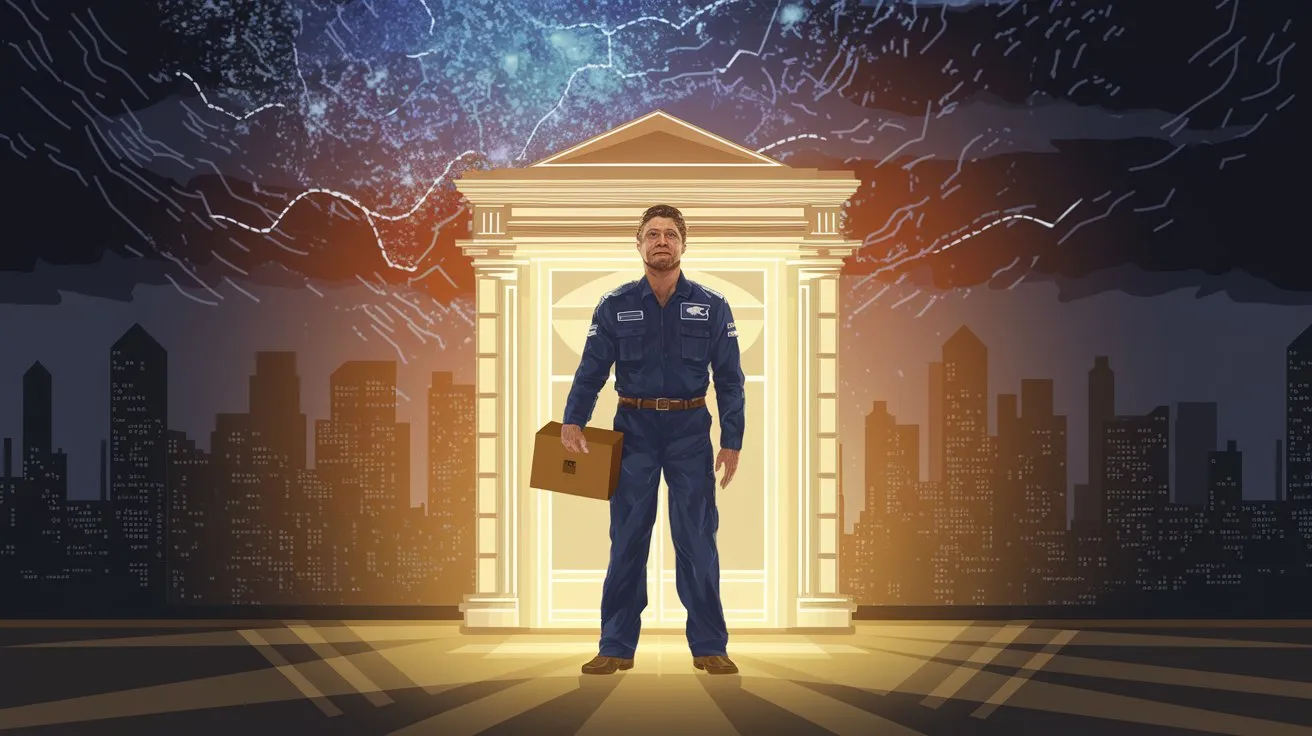Introduction: The Overlooked Guardian of Secure Communication
In an age where digital communication reigns supreme, it’s easy to overlook the humble envelope. We live in a world where we assume that emails will always send, texts will always arrive, and verification codes will always be accessible at the tap of a smartphone. But what happens when that world is suddenly compromised—when artificial intelligence fuels an unstoppable wave of misinformation, when power grids flicker into darkness due to cyberattacks or war, or when rogue AI forces entire communication networks to be shut down?
Enter the United States Postal Service (USPS)—an institution older than the country itself, and, perhaps, more vital now than ever before. The USPS is not just a carrier of birthday cards and holiday catalogs; it is a fail-safe system for secure, non-digital, human-verified communication with an ironclad chain of custody. In a world increasingly susceptible to digital manipulation, the USPS might be one of the last trustworthy lines of defense against emerging threats.
The Rising Threat of AI-Generated Misinformation and Deepfakes
We have entered an era where seeing is no longer believing. AI-generated deepfakes can manufacture convincing video evidence of events that never happened. Fraudsters can now clone voices to make a mother believe her son has been kidnapped, or a CEO wire millions to a hacker impersonating their CFO. The entire fabric of reality is at risk of becoming untrustworthy.
The consequences for national security are staggering. Imagine a hostile nation using deepfake technology to fabricate orders from government officials. Or scammers launching large-scale identity theft operations by exploiting AI-generated personas. The growing sophistication of AI means that digital identity proofing—once the gold standard for verification—is no longer foolproof.
But here’s where physical mail offers an advantage that AI struggles to breach:
- A tangible paper trail that cannot be hacked or fabricated in a matter of seconds.
- A human-verified authentication process, from mail carriers to postal inspectors, ensuring the physical integrity of messages.
- Chain-of-custody tracking, making it nearly impossible for bad actors to alter official documents without detection.
As AI-generated disinformation becomes more common, the USPS provides a way to securely deliver critical, verified messages that remain impervious to digital deception.
The Role of the USPS in a National Infrastructure Blackout
If power grids failed tomorrow, how long would it take for modern society to collapse? Days, maybe hours. The modern world assumes the stability of digital infrastructure, yet history tells us that power blackouts, natural disasters, and acts of war can obliterate that stability in an instant.
Consider the following scenarios:
- A cyberattack cripples the power grid, rendering electronic banking, online communications, and government operations useless.
- A solar flare disrupts satellite and GPS signals, causing massive electronic failures worldwide.
- A rogue AI entity is deemed dangerous enough that authorities must shut down major power infrastructure to prevent it from wreaking havoc.
In any of these cases, one of the only functioning nationwide networks left standing would be the USPS. Unlike electronic systems, the USPS does not rely on power grids, internet connections, or satellites. With its 31,000+ physical locations and a workforce trained to operate in disaster scenarios, it remains one of the most resilient forms of communication in a national crisis.
During Hurricane Katrina, for example, the USPS played a critical role in locating displaced citizens by using its address database—often succeeding where digital systems failed. When COVID-19 hit, the USPS delivered millions of stimulus checks and medical supplies when people had no other access to these essentials. In a future where large-scale cyberattacks or AI-induced blackouts disrupt society, the USPS would again serve as a national lifeline.
The Necessity of Secure, Non-Electronic Communication
In a world increasingly dependent on digital verification, we have largely forgotten the security advantages of physical mail. The USPS still offers services that no digital platform can truly replicate:
- Registered Mail: A service that documents every person who handles a piece of mail, creating a tamper-proof chain of custody.
- Certified Mail: A method that requires recipients to acknowledge delivery, ensuring that critical communications reach the intended hands.
- Physical Security Keys and Identity Verification: Under the POST ID Act, the USPS could play a larger role in identity proofing, issuing secure authentication credentials that AI cannot easily manipulate.
While email accounts can be hacked and digital messages can be spoofed, a registered letter cannot be faked, and a physical signature cannot be forged remotely.
Imagine a future where official government directives, legal documents, and sensitive security communications are exclusively delivered by hand, under strict postal security. The USPS has the capability to make this a reality—if we allow it to fulfill this crucial national security role.
Conclusion: The USPS as America’s Last Trusted Network
The world is changing at a pace we can barely comprehend. AI is making fraud easier. Cyberattacks are growing in sophistication. Wars are no longer fought solely with weapons, but with information, infrastructure sabotage, and digital deception.
Yet, standing amidst this storm of uncertainty is the United States Postal Service—a seemingly archaic institution that may be the most reliable national security asset we have left. In the coming years, the need for non-digital, verified, and secure communication will only grow. The USPS is not just a relic of the past—it may be one of the last defenses of the future.
Perhaps, in an age where everything is digital, our greatest security measure is something as simple as ink, paper, and a locked mailbox.


Leave a Reply